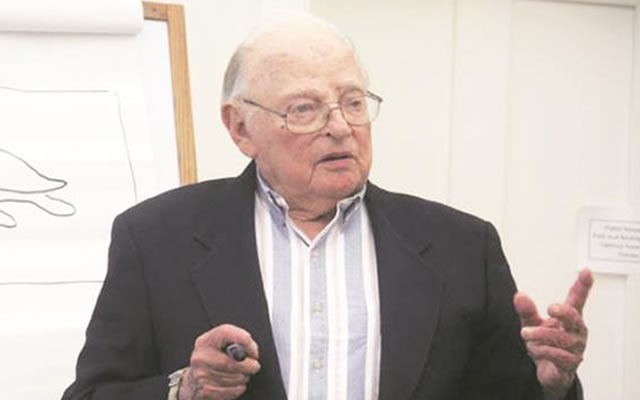Art is meaningless without the viewer

Knowledge Mushohwe
Art experts and critics have for decades relied on semiotics as the ideal tool for visual communication analysis.
Semiotics, through the use of signs, provides meaning in two layers by answering the questions, “What is it?”, and “What does it mean?”In semiotics, the sign is the central aspect to the concept.
Charles Sanders Peirce, a principal proponent of the theory, notes that the sign consists of three components: a signifier, a referent and a signified.
A signifier is the physically perceptible quality of a sign while the referent is the object, concept or idea being referred to, and the signified is the meaning attached to the signifier.
In visual communication semiotic analysis, the sign is the smallest known variable. Based on the works of Peirce, it can be identified through its three main characteristics.
Firstly, it must be physically perceptible, meaning that it must “in some degree be visible, audible or tangible” or one must be able to smell or taste it.
Secondly, it should refer to something and therefore it has a representative character. Lastly, because it is a representation of something else, it has to have an interpretative character.
However, answering the two questions does not completely tell the viewer everything there is to know about any particular artwork.
For example, if one is to understand Leonardo Da Vinci’s work of art, understanding that the composition depicts a woman holding a child and that the arrangement has religious proclivities does not tell the whole story.
If we are to understand an artwork are we not as equally concerned with the qualities of expression, his use of colour and his painterly brushstrokes as we are with conceptual meaning?
The quality of the work is often ignored when analysis prioritises conceptual understanding.
Using semiotics alone, an analysis of a drawing by a two-year-old of the crucifixion of Jesus Christ would look or sound the same as an analysis of one of the old masters’ paintings of the same subject.
A four-stage analysis model suggested by Gaitskell and Hurwitz in 1970 gives a fresher and more pragmatic look at art analysis.
The model answers four questions, namely, “What do you see?”, “How are things put together?”, “What is the artist trying to say?”, and “What do you think of it?”
“What do you see?” is the description phase similar to “denotation” in semiotics – it is the most obvious message and is uncovered through a superficial inspection of the image.
The phase does not attempt to give meaning; it only describes what the eye sees at first glance.
The second stage describes how things are put together and is seen as the analysis phase.
“Analysis” describes the quality of the work, including colour use, and how form, shape and texture are achieved in a composition. How are things put together” adds value to what semiotics presents by accommodating an understanding of the quality of any artwork.
Quality is what distinguishes one artwork from another and discerns between worthless and priceless art.
Because quality is particularly important in art, it cannot be ignored when making an analysis.
The third stage, “What is the artist trying to say?” is the interpretation phase and is similar to the connotation meaning in semiotics, the latent meaning of the image that is less obvious and subtextual.
In other words, the third phase attempts to answer the question, “What ideas and values are expressed through what is represented and through the way in which it is represented?”
The final stage of image analysis in the model suggested by Gaitskell and Hurwitz that attempts to answer the question, “What do you think of it?”
The phase may also be termed, “judgment” as it gives the viewer the opportunity to respond to the artwork.
Art is created to provoke a response from its reader.
It is therefore valuable that any analysis does not only tell us about what is inherent inside the frames of a product of creativity, it should also document the response of the viewer.
Gaitskell and Hurwitz created a model that in many ways improved on semiotic image analysis.
Semiotics, on the one hand, emphasises the sign, and identifies it as the principal proponent necessary for extracting meaning from an artwork.
Gaitskell and Hurwitz, on the other hand, found the motion of “experiencing art” as much longer than what semiotic pioneers suggested.
What is perhaps most important is the final phase of their model that solicits a response from the viewer.
The artist is not seen as a part of the work that he produces, but the viewer is seen by Gaitskell and Hurwitz as very much a part and parcel of both the product and the process of analysis.
Without the viewer art becomes meaningless.
It is only through a viewer that art is experienced.







Comments